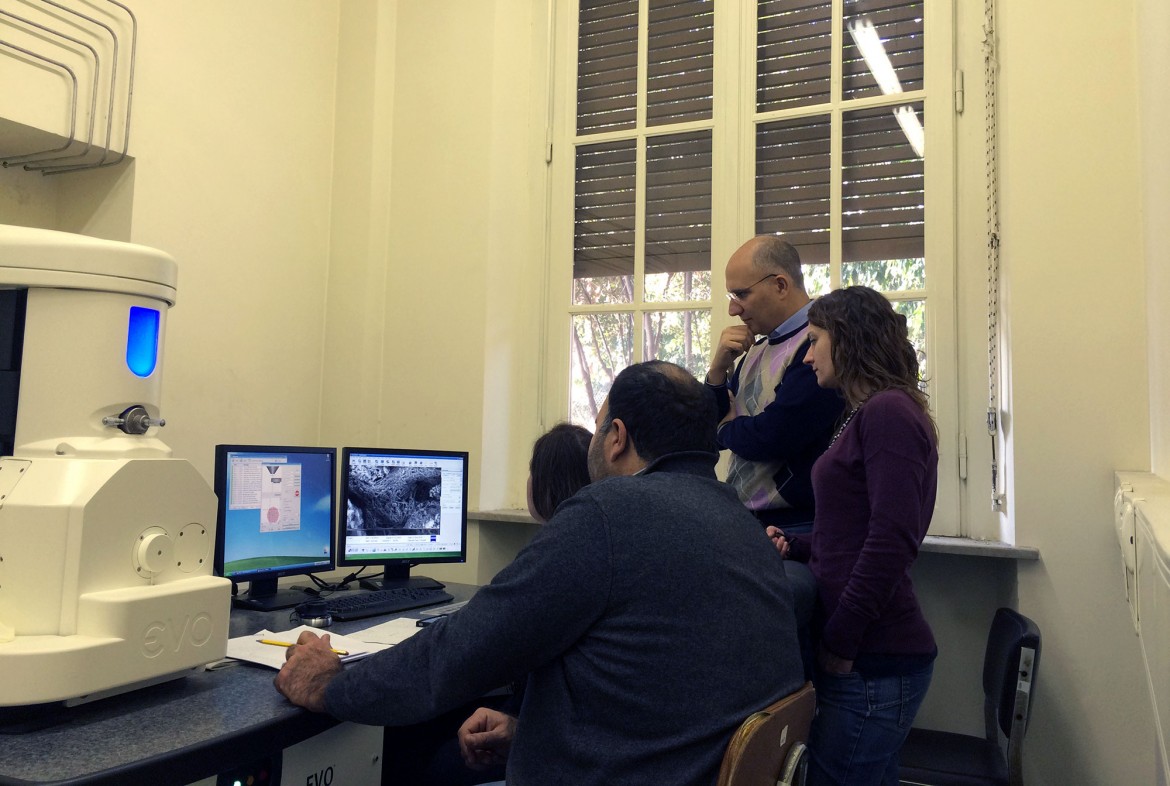
The University of Palermo team, with Dr. Flavia Pinzari of CRA-RPS of Rome, is studying past landscapes using ancient soil horizons as archaeological records. The project aims at evaluating the biodiversity of no longer existing environments, in order to reconstruct the past agroecosystems. One of the approach used in the study consisted in the selective sampling of buried paleo-soil horizons for the search of “testimonials” or useful archaeobotanical "indicators" that can tell something about past environments and peculiar ecosystems no longer present. To this purpose it was decided to start extracting from soil samples and studying the phytoliths. Phytoliths are produced in and between the cells of living plants. They consist of biogenic silica, also referred to as opal, namely a hydrated amorphous form of silica (SiO2.nH2O) formed by complex inorganic polymerization processes. Once the plant dies, phytoliths are released in the environment due to the decomposition of the organic matter. In general, phytoliths are not transported over long distances because they are relatively “heavy” particles (as opposed to pollen, for instance). Depending on the type of activities carried out by the human group or individual, the natural input of phytoliths can be more or less important in the constitution of the sedimentary assemblage. All human activities leave behind plant organic matter and phytoliths. Phytoliths can thus have taxonomical significance and be good indicators of past vegetation cover and environmental conditions, they can give evidence of paleoenvironment or vegetation change and represent a first step to explore the biodiversity of recent and past- environments. Phytoliths were studied also embedded in buried and carbonized plant micro-particles that were recovered during the soil seaving procedures. To do that, samples were observed under a scanning electron microscope (SEM).

